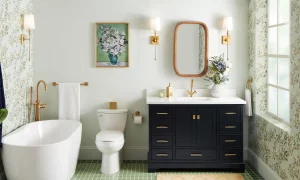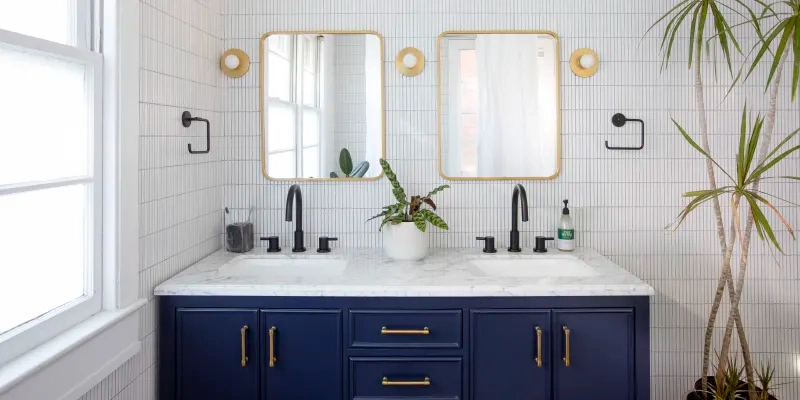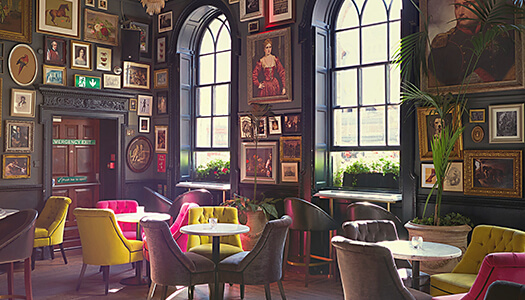Maximizing bathroom space is a critical aspect of construction projects, particularly for event venues where user experience and functionality are paramount. Knowing how to increase bathroom space effectively can transform these essential facilities into areas that accommodate high traffic, reduce congestion, and enhance overall comfort. By leveraging innovative design strategies, such as modular fixtures, wall-mounted installations, and multi-functional elements, construction professionals can create spacious, efficient, and aesthetically pleasing bathrooms. This guide explores practical solutions for optimizing bathroom space, ensuring accessibility, and incorporating modern technologies to meet the demands of diverse users in any setting.
Key Takeaways
- Utilize modular fixtures and wall-mounted installations to free up floor space and enhance cleaning efficiency.
- Design strategic layouts that optimize user flow, reducing congestion from entry to fixtures.
- Incorporate multi-functional elements, such as foldable tables, to maximize utility in limited spaces.
- Ensure compliance with accessibility standards to accommodate all individuals and enhance overall functionality.
- Implement advanced ventilation and smart technology to maintain hygiene and improve user experience in high-traffic areas.
Understanding the Importance of Bathroom Space
Recognizing the significance of bathroom space in construction projects is essential for both functionality and user experience. An effectively designed bathroom not only caters to the basic needs of users but also enhances overall satisfaction and comfort. In high-traffic environments, such as venues for events, the importance of maximizing bathroom space cannot be overstated.
Strategically planned restroom facilities can alleviate congestion, reduce wait times, and foster a sense of belonging among attendees. The layout should prioritize accessibility, ensuring that individuals of all abilities can navigate the space with ease. Incorporating innovative design elements, such as modular partitions and multi-functional sinks, can optimize available square footage without compromising aesthetics.
Moreover, the integration of sustainable materials and efficient plumbing systems contributes to the long-term viability of bathroom spaces, aligning with contemporary environmental standards. By focusing on thoughtful design and practical solutions, construction projects can create bathrooms that not only meet the immediate needs of users but also reflect a commitment to quality and care. Ultimately, understanding the importance of bathroom space is a vital step in enhancing the overall experience for all who utilize these essential facilities.
Key Challenges in Bathroom Design
Designing bathrooms in construction projects presents several key challenges that can greatly impact the functionality and user experience. One of the foremost issues is space constraints, which can limit the layout and accessibility of fixtures. Other challenges include ensuring compliance with building codes and accessibility standards, which can complicate design decisions.
Consider the following factors that influence bathroom design:
- User Flow: Optimizing the pathway from entry to fixtures to minimize congestion.
- Fixture Placement: Strategically positioning toilets, sinks, and showers to enhance usability and comfort.
- Storage Solutions: Integrating cabinets and shelving without encroaching on essential space.
- Ventilation and Lighting: Balancing natural and artificial light while ensuring adequate airflow to maintain hygiene.
Addressing these challenges requires a thoughtful approach that marries aesthetics with practicality. Each project demands a tailored solution, focusing on maximizing space while providing a welcoming atmosphere. Ultimately, understanding the key hurdles in bathroom design is critical for creating functional and inviting spaces that foster a sense of belonging. This understanding lays the groundwork for exploring innovative strategies on how to increase bathroom space effectively.
Innovative Strategies for Space Optimization
To effectively maximize bathroom space within construction projects, leveraging innovative strategies is essential. One such strategy is the incorporation of modular fixtures and furnishings. These adaptable elements allow for a dynamic use of space, enabling bathrooms to accommodate varying user needs without compromising functionality.
Additionally, utilizing wall-mounted sinks and toilets can free up valuable floor space, creating a visually larger environment. These fixtures also offer ease of cleaning, which is a vital consideration for high-traffic areas.

Incorporating multi-functional designs, such as foldable changing tables or integrated storage solutions, further enhances the utility of limited spaces. This approach not only optimizes available area but also caters to diverse user requirements, fostering a sense of inclusion.
Employing smart technology, like motion-sensor lighting and automated faucets, can enhance user experience while reducing clutter. Finally, strategic use of mirrors can create the illusion of expanded space, making bathrooms feel more welcoming and less confined. By implementing these innovative strategies, construction projects can effectively increase bathroom space, ensuring that every user feels comfortable and valued in their environment.
Effective Layouts for Event Venues
Creating effective layouts for event venues involves a meticulous approach to space planning that prioritizes both functionality and user experience. A well-designed layout not only enhances the flow of the event but also guarantees attendees feel comfortable and engaged.
To achieve this, consider the following elements in your design:
- Zoning: Clearly define areas for activities, such as registration, dining, and entertainment, allowing for smooth passages.
- Accessibility: Confirm pathways are wide and unobstructed, accommodating all guests, including those with mobility challenges.
- Bathroom Proximity: Strategically position restrooms near high-traffic areas to minimize congestion while adhering to building codes that enhance user comfort.
- Visual Aesthetics: Integrate elements like lighting and decor that promote a welcoming atmosphere, encouraging a sense of belonging among attendees.
Future Trends in Bathroom Construction
As event venues increasingly prioritize guest experience, the design of bathroom spaces is evolving to meet modern needs and expectations. Future trends in bathroom construction focus on maximizing space and enhancing functionality while promoting a sense of belonging among users. Innovative modular designs are gaining traction, allowing for flexible configurations that can adapt to varying event sizes and types.
Sustainable materials and technologies are also becoming essential, as venues seek to minimize their environmental footprint. Utilizing water-efficient fixtures and smart sensors not only reduces consumption but also enhances user convenience, promoting a positive experience. The integration of advanced ventilation systems is another trend, ensuring ideal air quality and comfort in high-traffic areas.
Moreover, attention to aesthetics remains paramount. Incorporating elements such as natural light, greenery, and tasteful finishes can transform bathrooms into inviting spaces, making them a seamless part of the overall event experience.
Finally, embracing technology through touchless systems and digital guides can streamline the user experience, fostering a sense of community and efficiency. By understanding how to increase bathroom space effectively, event venues can elevate guest satisfaction and create memorable experiences.
Frequently Asked Questions
What Materials Are Best for Maximizing Bathroom Space Efficiency?
Best materials for maximizing bathroom space efficiency include lightweight, modular fixtures, compact vanities, and wall-mounted storage solutions. These selections enhance functionality while ensuring aesthetic appeal, ultimately contributing to a more spacious and organized environment.
How Can Technology Aid in Increasing Bathroom Space?
Technology can considerably aid in increasing bathroom space through innovative design software, modular fixtures, and smart space-utilization tools. These advancements enable optimized layouts, efficient plumbing systems, and multifunctional installations, ultimately enhancing user experience and functionality.
What Are the Cost Implications of Expanding Bathroom Space?
Expanding bathroom space incurs various cost implications, including construction expenses, plumbing modifications, and potential permits. Careful budgeting and planning are essential to guarantee financial feasibility while balancing functionality and aesthetic considerations in the design process.
Are There Regulations Affecting Bathroom Space in Construction?
Yes, regulations greatly influence bathroom space in construction projects, including local building codes and accessibility standards. Adhering to these regulations guarantees compliance, promotes inclusivity, and optimizes functionality, ultimately enhancing user experience and safety.
How to Assess the Need for Increased Bathroom Space in Events?
To assess the need for increased bathroom space in events, analyze attendee numbers, duration, type of event, and existing facilities. Conduct surveys to gather feedback, ensuring that space meets the comfort and accessibility requirements of all guests.
Conclusion
In summary, effective bathroom space optimization in event construction is essential for enhancing user experience and functionality. Employing modular fixtures, wall-mounted installations, and strategic mirror placement can greatly increase perceived space. Incorporating smart technology and adhering to accessibility standards further improves traffic flow and reduces congestion. By embracing innovative design strategies and layouts, event venues can achieve an efficient balance between capacity and comfort, ultimately leading to a more successful and enjoyable experience for all attendees.
You May Also Like To Read:




